

Armenian Genocide. In April 1915 the Ottoman government embarked upon the systematic decimation of its civilian Armenian population.
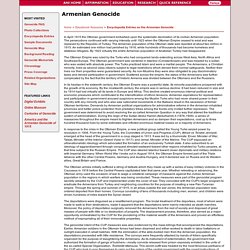
The persecutions continued with varying intensity until 1923 when the Ottoman Empire ceased to exist and was replaced by the Republic of Turkey. The Armenian population of the Ottoman state was reported at about two million in 1915. An estimated one million had perished by 1918, while hundreds of thousands had become homeless and stateless refugees. By 1923 virtually the entire Armenian population of Anatolian Turkey had disappeared. The Ottoman Empire was ruled by the Turks who had conquered lands extending across West Asia, North Africa and Southeast Europe. Slavery in America. War in Darfur. The War in Darfur[12][13] was a major armed onslaught in the Darfur region of Sudan.
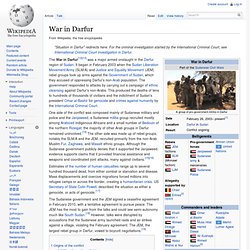
It began in February 2003 when the Sudan Liberation Movement/Army (SLM/A) and Justice and Equality Movement (JEM) rebel groups took up arms against the Government of Sudan, which they accused of oppressing Darfur's non-Arab population. The government responded to attacks by carrying out a campaign of ethnic cleansing against Darfur's non-Arabs. This produced the deaths of tens to hundreds of thousands of civilians and the indictment of Sudan's president Omar al-Bashir for genocide and crimes against humanity by the International Criminal Court. Estimates of the number of human casualties range up to several hundred thousand dead, from either combat or starvation and disease. Mass displacements and coercive migrations forced millions into refugee camps or across the border, creating a humanitarian crisis. Origins of the conflict[edit] The Darfur crisis is also related to a second conflict.
Timeline[edit] Rwanda: The Wake of a Genocide. Joseph Kony (Ugandan rebel. Khmer Rouge. The Khmer Rouge (/kəˈmɛər ˈruːʒ/; French for "Red Khmers", French pronunciation: [kmɛʁ ʁuʒ]; Khmer: ខ្មែរក្រហម Khmer Kraham) was the name given to the followers of the Communist Party of Kampuchea in Cambodia.

It was formed in 1968 as an offshoot of the Vietnam People's Army from North Vietnam. It was the ruling party in Cambodia from 1975 to 1979, led by Pol Pot, Nuon Chea, Ieng Sary, Son Sen, and Khieu Samphan. Democratic Kampuchea was the name of the state as controlled by the government of the Khmer Rouge from 1975 to 1979. It allied with North Vietnam, the Viet Cong, and Pathet Lao during the Vietnam War against the anti-Communist forces. Illegal drug trade. International drug routes.
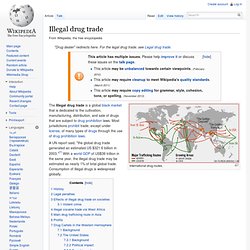
History[edit] Chinese edicts against opium smoking were made in 1729, 1796 and 1800.[2] Addictive drugs were prohibited in the west in the late 19th and early 20th centuries.[3][4][5] An illegal drug trade emerged in the early 19th century. China retaliated by enforcing the ban on imports of opium that led to the First Opium War (1839–1842) between Great Britain and Qing dynasty China. Chinese authorities had banned opium, but the United Kingdom forced China to allow British merchants to trade opium with the general population. The Age of Imperialism. During the late nineteenth and early twentieth centuries, the United States pursued an aggressive policy of expansionism, extending its political and economic influence around the globe.
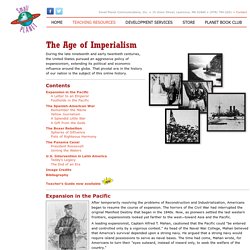
That pivotal era in the history of our nation is the subject of this online history. Expansion in the Pacific. Introduction to the Holocaust. The Holocaust was the systematic, bureaucratic, state-sponsored persecution and murder of six million Jews by the Nazi regime and its collaborators.
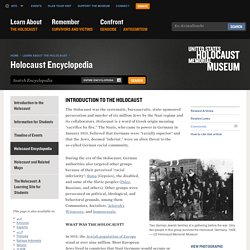
Holocaust is a word of Greek origin meaning "sacrifice by fire. " The Nazis, who came to power in Germany in January 1933, believed that Germans were "racially superior" and that the Jews, deemed "inferior," were an alien threat to the so-called German racial community. During the era of the Holocaust, German authorities also targeted other groups because of their perceived "racial inferiority": Roma (Gypsies), the disabled, and some of the Slavic peoples (Poles, Russians, and others).
Other groups were persecuted on political, ideological, and behavioral grounds, among them Communists, Socialists, Jehovah's Witnesses, and homosexuals. WHAT WAS THE HOLOCAUST? Although Jews, whom the Nazis deemed a priority danger to Germany, were the primary victims of Nazi racism, other victims included some 200,000 Roma (Gypsies). Further Reading.